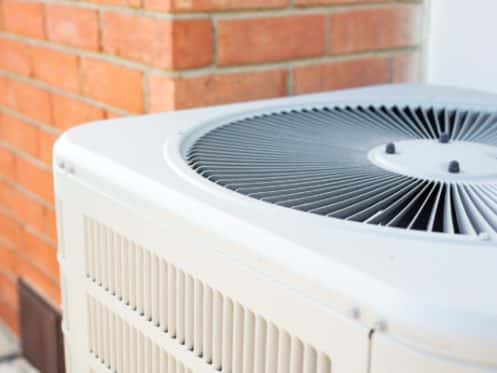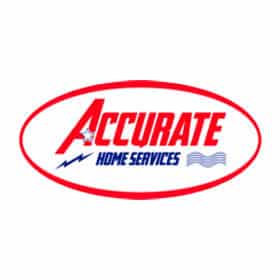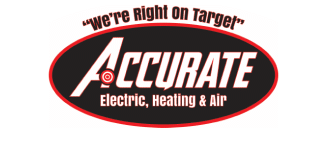When replacing or installing a new air conditioner, furnace, or heat pump, it is essential that the unit is properly sized for your home. If the unit is either undersized or oversized, it will always use more energy and simply not cool or heat well as you need it to. An undersized unit will need to run almost constantly. If the unit is too large, it will end up short cycling or turning on and off constantly. Either of these issues puts a huge amount of extra strain on the unit and will usually shorten its lifetime dramatically while also making it nearly impossible for the unit to effectively manage your home’s temperature.
The best way to know what size of HVAC unit you need in Crandall is to have a certified technician calculate it for you. Nonetheless, there are a few factors that you can use to get a rough estimate, and here is an overview of the factors that influence what size HVAC unit you need and also how HVAC professionals size equipment.
Calculating Total Area
When determining what size of HVAC unit is needed, the very first thing is to calculate the total area of the home. This is normally done by figuring out the home’s total square footage. When performing this calculation, it is important to only include the living spaces and not any unconditioned areas like your attic or garage.
If you’re unsure of what your home’s square footage is, you can calculate it by measuring the length and width of each room. You then need to multiply the length and width to determine each room’s square footage and then add these numbers together to find your home’s total square footage.
Calculating square footage is important as there are specific recommendations for how many BTUs (British Thermal Units) of heating or cooling are required per square foot. These recommendations are generally based on a home with standard 8-foot ceilings. If there are high ceilings in any of your rooms, it is usually better to calculate based on cubic feet. High ceilings increase the total volume of air that needs to be heated and cooled, which means that you will always need at least a slightly larger unit to account for this.
Why Climate Zone Is an Important Factor
The local climate is obviously one of the biggest factors in determining how hot or cold your home will get during different parts of the year. This is why the BTU recommendations we mentioned are always based on the local climate zone.
The southern part of Texas is in US Climate Zone 2, while the Dallas area and all of northern and central Texas are in Climate Zone 3. These zones generally experience quite hot weather in the summer and fairly mild winters. As a result, you will typically need a larger cooling unit and a slightly smaller heating unit than if you lived in a cooler northern climate.
For Climate Zone 3, the recommendation is that you need approximately 40 to 45 BTUs of both cooling and heating per square foot. If your home is 1,000 square feet, this means you would need at least a 40,000-45,000 BTU unit in order to heat or cool your home efficiently and effectively. However, as you will see in the next section, simply accounting for square footage and climate zone isn’t always sufficient to ensure that your new HVAC unit is the proper size for your home.
Understanding Manual J Calculations
When determining what size of air conditioner, heat pump or any other HVAC unit is needed, HVAC contractors don’t just take the building’s total square footage and the climate zone into account. These factors alone are enough to allow you to get a rough estimate of what size of unit you need, but they aren’t sufficient on their own. This is because there are numerous other factors that will play a major role in determining how many BTUs a unit needs to produce in order to heat or cool a home efficiently and effectively.
For this reason, HVAC technicians use something known as a Manual J calculation to more accurately judge what size of unit is required. A Manual J calculation takes into account all of the other important factors to ensure that the new unit is exactly the right size for the building.
Two of the most important factors are how much insulation the building has and how well-sealed its envelope or exterior structure is. Insulation is essential as this determines how much heat is lost during the colder months and how much heat is gained during the hotter parts of the year. If a home has little to no insulation in the walls and/or attic, it will always need a larger HVAC unit than the same size building with good insulation.
How well sealed the structure is also affects heat loss and heat gain in the same way. The more air leaks there are in the building’s envelope, the more heat loss there will be in cold weather and the more heat gain during hot weather. This is usually not much of an issue in newer buildings since they are typically built with a much tighter envelope, whereas older buildings generally have lots of air leaks throughout the entire structure.
The number of people that regularly live in or occupy the building is another factor that needs to be accounted for, especially when sizing cooling equipment. People give off lots more heat than you might imagine. The more people there are in the building, the hotter it will be and the more cooling you’ll need.
The average amount of direct sunlight or shade the building gets throughout the day is also important since this will affect how much heat gain the home receives from the sun. A home that is shaded throughout most of the day will typically need a larger heating system and a smaller cooling system than a similar home that receives lots of direct sunlight.
Windows are often the single biggest contributor to heat gain from the sun. As a result, the Manual J calculation also takes into account how many windows the home has, how big they are and what direction they face.
South-facing and west-facing windows contribute the most to heat gain since they get the most sun during the hottest parts of the day. These windows will be great for helping to keep your home warmer during the colder months. However, they will cause your home to get much hotter in the summer, which means you’ll need a bigger cooling system.
Crandall’s HVAC Experts
If you need any type of new HVAC unit, you can count on the experts at Accurate Home Services to ensure that your new unit is the perfect size for your home. Our team specializes in heating and air conditioning installation as well as repairs and preventative maintenance. If you need duct cleaning or are considering upgrading your HVAC system with a smart Wi-Fi thermostat, we can assist with that as well. Our licensed electricians also install and service whole-home generators, electrical panels, EV chargers, whole-home surge protectors, ceiling fans, lighting, and more. Give us a call today if you need to schedule any HVAC service in Crandall or the surrounding areas.




